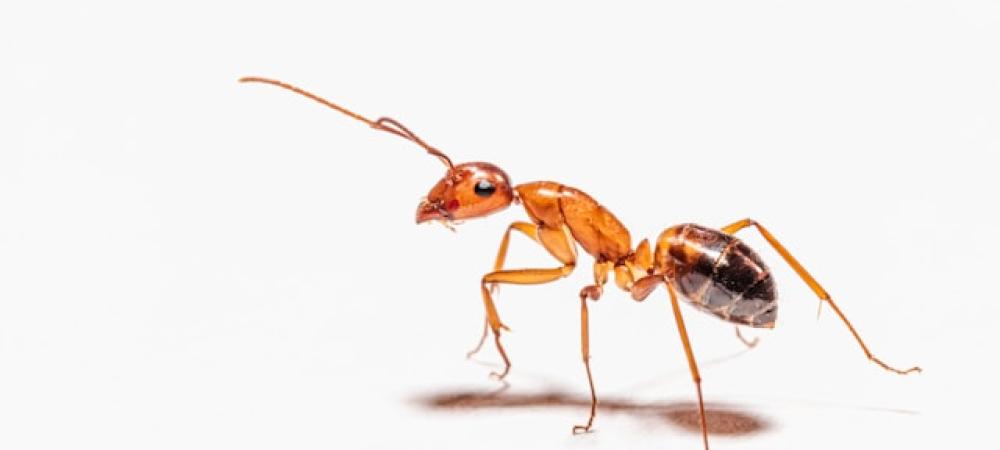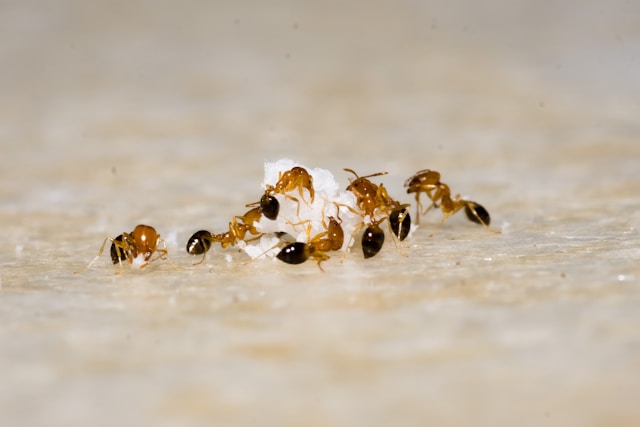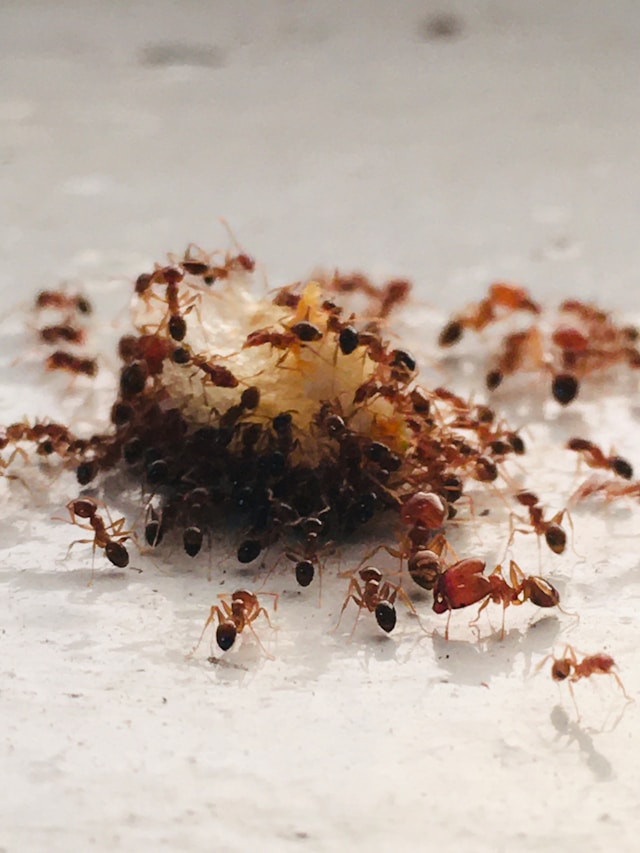Top 4 Dangers of Ants

Despite their constant presence in our gardens, homes, and backyards, it’s easy to underestimate ants. These pests are tiny and typically nothing more than an annoyance, but certain species can leave a mark on you and your home!
From health risks and structural damage, these tiny terrors can cause trouble for homeowners in the Washington Metropolitan area. In this blog, we’ll cover some of the dangers of ants and how proactive pest management can lessen their impact on your life.
Ant Health Risks
Ants aren't just a nuisance; they can also pose significant health risks, like allergic reactions, pathogen transmission, and food contamination.
Allergic Reactions
Stinging ants, like the invasive red imported fire ant, can trigger allergic reactions. When they sting, these pests inject a potent venom into your skin, often leading to common symptoms like itching, redness, swelling, and mild discomfort.
For those with sensitivities or allergies, these reactions can be more severe, causing difficulty breathing, hives, or anaphylaxis. It’s essential to always stay cautious around ants, especially around aggressive species like the red imported fire ant.
If you have known allergies to insect bites or stings, contact a medical professional after an unwanted encounter with a fire ant, even if symptoms do not initially present. Anaphylaxis is a severe condition that compounds the dangers that ants can cause.
Disease Transmission
While ants don't directly transmit diseases to humans, they can carry pathogens on their bodies. As ants roam around unsanitary objects, like decaying animals, waste, animal droppings, or other organic matter, they come in contact with unsavory bacteria.

Ants aren’t picky about where they set up shop or forage, meaning these tiny pests can spread harmful bacteria around or onto your kitchen, pantry, and even unsecured food items. Pharaoh ants, in particular, are known to spread diseases in healthcare facilities, while others may increase the transmission risk of foodborne illnesses or infections.
Structural Dangers Caused by Ants
Ants can also wreak havoc on your home’s structural integrity. Here’s how they do it:
Damage to Wooden Structures
Carpenter ants, in particular, can tunnel into wooden structures, quickly destroying everything from furniture to decks and house frames. While they don't eat wood, the worker ants excavate intricate galleries into the wood, weakening its structure over time.
Of course, carpenter ants won’t cause the damage that termites will; however, an unchecked infestation can eventually lead to costly repairs or replacements and compromise the safety of the affected structures.
Here are some of the signs of carpenter ant infestation:
- Seeing ant trails along walls or floors.
- Finding winged ants or swarmers indoors.
- Spotting large, black ants inside your home.
- Decaying or damaged wood, especially in damp spots.
- Noticing piles of wood shavings or frass near wooden structures.
- Hearing rustling or scratching sounds coming from infested areas.
Electrical Hazards
Certain ant species, like fire ants, can build nests in electrical equipment and outlets. The warm buzz of electrical units provides warmth during colder months and prime shelter from harsh conditions.
As the fire ants move into outlets or electrical boxes, they also move in soil and other debris to begin shaping their nest; this poses a serious health hazard— especially as the pest continues to damage the wiring by chewing through wires and electrical insulation.
A good shock doesn’t deter them, either. When a worker ant ends up on the wrong side of electricity, it will release pheromones that draw other ants to the area, compounding your ant infestation and increasing the likelihood of equipment damage or fire hazards.
Weakening Foundations
Pavement ants and similar species often dig beneath foundations, sidewalks, and driveways. While seemingly harmless (I mean, ants live in the ground, right?), these pests can contribute to soil erosion over time.
Continuous digging weakens foundations, leading to eventual structural damage or complete collapse. Prompt intervention can stop these pests in their tracks and get ahead of the problem before it grows out of control.
Agricultural & Ecological Risks
The dangers of ants extend past your home or business. Invasive species can cause significant damage to crops and plants like most other garden pests. These pests will feed on the seed, fruit, and sap of plants, slowing eating through or even killing the plant!
They may also protect honeydew-producing pests like aphids, further exacerbating the damage to agricultural produce. This interference with plant growth and reproduction can lead to reduced crop yields and economic losses for farmers.
Crazy Ant Farmers | Weird Nature | BBC Studios
Invasive ants can also pose a significant threat to biodiversity by preying on or competing with native species for resources. Their aggressive behavior and rapid spread can lead to the decline or extinction of native fauna and flora.
The Cost of Ant Control
Think that’s all you need to know about the dangers of ants? You should consider what they may do to your wallet!
As discussed, severe ant infestations can damage structures and equipment, leaving you with a hefty repair bill after the pest professionals have cleaned them out. Depending on the length and severity of the infestation, you could be looking at costly repairs for wood decay, foundation erosion, or electrical repair.
In agriculture, ant infestations can damage crops, reduce seasonal yields, and compromise crop quality. For anyone in the agricultural business, having a strong and abundant crop means everything, and certain ant species can cause significant financial setbacks for farmers and agricultural producers.
Food processing or storage industries can also be victim to ants contaminating products, leading to product recalls, disposal costs, and reputational damage. To avoid the additional financial burden and the annoyance of ants, we recommend you reach out to a professional pest control company at the first sign of ants—no matter the species!
Connor’s Pest Pros Eliminates Ants Across the Washington DC Metro!
While DIY treatments may appear cost-effective for addressing ant infestations, the potential risks and limitations outweigh the benefits they could offer. From health risks and structural damage to agricultural and industrial loss, these pests require more than just a storebought product or DIY trap.

Professional intervention can help mitigate some of the dangers of ants. With our customized solutions supported by our proven expertise, experience, and proven techniques, we’ll eliminate pesky ants and keep your property protected.
Say goodbye to ant infestations with Connor’s Pest Pros! Contact us today!
